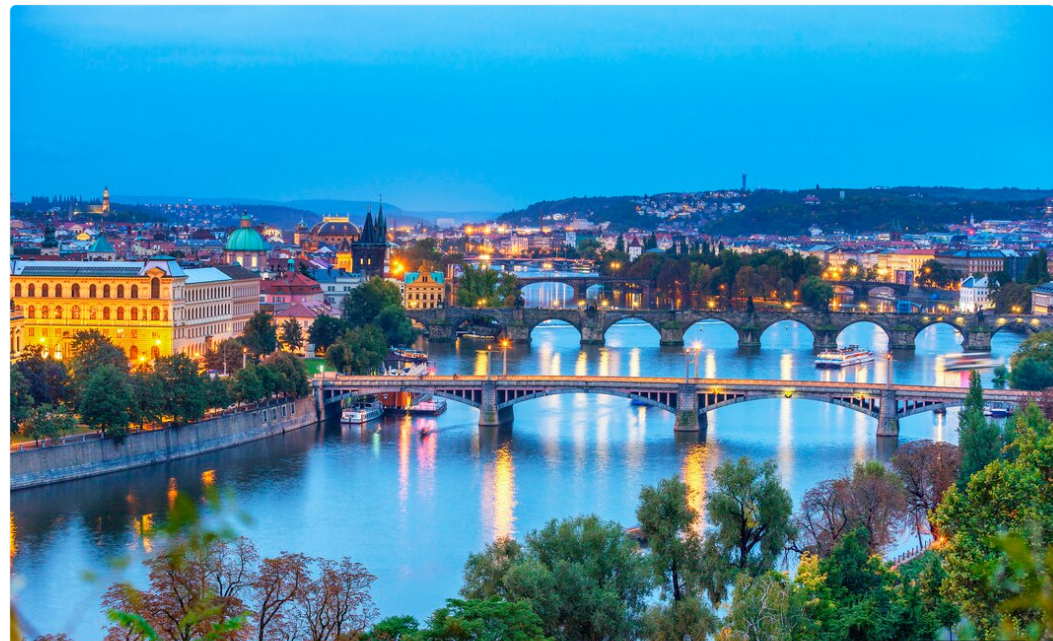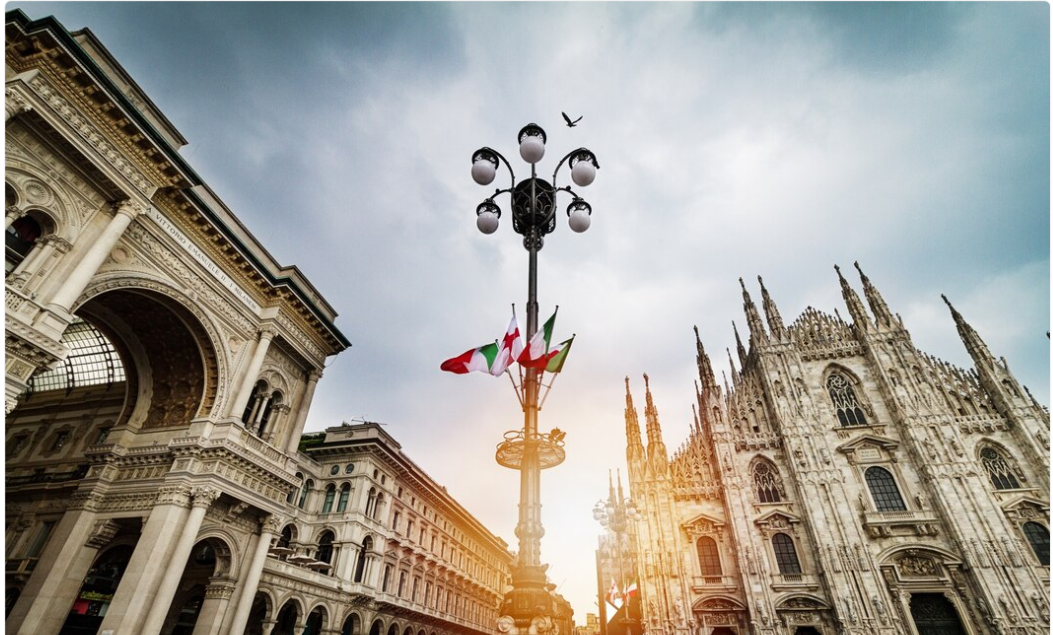
by Dulce Navarro | Mar 19, 2025 | Countries, Culture, Europe, Lifestyle, Residency, Travel, Work
Expat Life in Europe: Pros, Cons, and Tips for a Smooth Transition
Living abroad is a dream for many, and Europe continues to be one of the most sought-after destinations for expats from around the world. Whether it’s the allure of rich history, diverse cultures, or world-class healthcare and education, Europe offers countless opportunities for personal and professional growth. However, like any significant life change, moving to a new country comes with its own set of challenges. In this blog post, we’ll explore the pros and cons of expat life in Europe and share practical tips for making your transition as smooth as possible.
The Pros of Expat Life in Europe
1. Diverse Cultures and Languages
Europe is a mosaic of cultures, each with its own traditions, cuisines, and languages. Living in Europe provides expats with the opportunity to immerse themselves in different ways of life, learn new languages, and gain a broader understanding of the world.
2. Travel Opportunities
One of the most exciting aspects of living in Europe is the ease of travel. With efficient rail systems, budget airlines, and close proximity between countries, weekend getaways to other European cities are both feasible and affordable.
3. Quality of Life
Europe consistently ranks high for quality of life indicators. Many European countries offer excellent healthcare systems, strong social services, high safety standards, and vibrant cultural scenes that enhance everyday living.
4. Career Development
For professionals, Europe presents a wealth of career opportunities across various industries. The diverse job market, coupled with international business hubs in cities like London, Paris, Berlin, and Amsterdam, provides ample avenues for career advancement.
5. Education and Learning Opportunities
Europe is home to some of the world’s best universities and educational institutions. Families with children can benefit from international schools, while adults can take advantage of various learning opportunities to broaden their skills.
The Cons of Expat Life in Europe
1. Bureaucracy and Documentation
European countries are known for their sometimes complex bureaucratic procedures. Obtaining visas, work permits, and registering residency can be time-consuming and require meticulous attention to detail.
2. Language Barriers
While many Europeans speak English, not knowing the local language can still pose challenges, particularly when dealing with official matters or in smaller towns and rural areas.
3. Cost of Living
Major European cities such as London, Paris, and Zurich are among the most expensive places in the world. Rent, groceries, transportation, and dining out can add up quickly, and expats need to plan their finances carefully.
4. Homesickness and Cultural Adjustment
Leaving behind family, friends, and familiar surroundings can lead to feelings of loneliness and homesickness. Adapting to new cultural norms and customs can take time and patience.
5. Taxation and Financial Complexity
Expats often face the challenge of dealing with taxation in both their home country and their host country. Understanding tax treaties, double taxation agreements, and financial reporting requirements is essential to avoid legal and financial complications.
Tips for a Smooth Transition
1. Do Your Research
Before moving, thoroughly research your destination. Learn about the cost of living, healthcare, housing, and job market. Knowing what to expect will help you make informed decisions.
2. Learn the Language
Even a basic knowledge of the local language can go a long way in helping you integrate and navigate daily life. Consider taking language classes or using language learning apps.
3. Connect with the Expat Community
Joining expat groups, both online and in-person, can provide valuable support and friendship. These communities are a great source of information and can help ease the transition.
4. Prepare Financially
Create a budget that accounts for your new cost of living and any unexpected expenses. Make sure to understand the local banking system and consider consulting a financial advisor for guidance.
5. Stay Open-Minded and Patient
Adjusting to a new culture takes time. Stay open to new experiences, be patient with yourself, and embrace the challenges as part of the adventure.
6. Secure Professional Support When Needed
Whether it’s legal advice, tax assistance, or translation services, professional help can make a significant difference. Having the right support will save you time and stress.
7. Keep Your Documents in Order
Ensure that all your documents, from visas to insurance papers, are up to date and easily accessible. Keeping both digital and physical copies is a wise practice.
Conclusion
Living as an expat in Europe can be one of the most rewarding experiences of your life. The exposure to different cultures, professional growth opportunities, and lifestyle enhancements are unparalleled. However, success lies in preparation, adaptability, and continuous learning.
Stay Connected for More Travel and Lifestyle Inspiration. For more insights into travel, culture, and lifestyle tips, follow me on Instagram @salvadorordorica. If you’re seeking professional translation and localization services to enhance your global ventures, visit The Spanish Group — your trusted partner in bridging cultures worldwide.

by Dulce Navarro | Mar 18, 2025 | Countries, Culture, Europe, Lifestyle, Residency, Work
Best Countries in Europe for Digital Nomads: Where to Work & Live Remotely
In the past decade, the digital nomad lifestyle has transformed from a fringe movement into a mainstream career choice. With remote work becoming increasingly accessible, professionals worldwide are seeking countries that not only offer reliable infrastructure but also provide cultural enrichment, safety, and an affordable cost of living. Europe stands out as a top destination for digital nomads thanks to its rich history, diverse cultures, and modern amenities. In this article, we explore the best countries in Europe for digital nomads and what makes each of them uniquely appealing.
1. Portugal
Portugal consistently ranks high for digital nomads, thanks to its pleasant climate, stunning coastal cities, and excellent quality of life. Lisbon and Porto, in particular, have become thriving hubs for remote workers, offering co-working spaces, fast internet, and a welcoming international community. The cost of living is affordable compared to other Western European countries, and the country’s Digital Nomad Visa allows remote workers to stay for up to a year.
Why Portugal?
- Affordable living costs
- Vibrant expat communities
- Excellent weather
- Strong digital infrastructure
- Easy visa processes for digital nomads
2. Spain
Spain offers a mix of energetic cities, charming small towns, and picturesque coastlines. Barcelona and Madrid are favorites for digital nomads, boasting a variety of co-working spaces and networking opportunities. For those seeking a more relaxed lifestyle, cities like Valencia and Seville offer a slower pace with equally good amenities. Spain’s warm climate, rich cultural scene, and relatively affordable living expenses make it an attractive option.
Why Spain?
- Diverse work-friendly cities
- Low-cost public transportation
- Warm, sunny climate
- Delicious cuisine
- Vibrant cultural experiences
3. Estonia
Estonia is often celebrated as one of the most digitally advanced countries in the world. The country offers a dedicated Digital Nomad Visa that allows remote workers to live and work in Estonia for up to a year. Tallinn, the capital city, provides a perfect blend of medieval charm and cutting-edge technology, with excellent Wi-Fi coverage and co-working spaces.
Why Estonia?
- Digital Nomad Visa availability
- Robust digital infrastructure
- English widely spoken
- Safe and clean environment
- Low cost of living
4. Germany
Germany’s strong economy, high-quality healthcare system, and efficient public transportation make it an excellent choice for digital nomads. Berlin is a top choice due to its vibrant startup scene, abundance of co-working spaces, and diverse international population. While the cost of living can be higher in major cities, Germany’s stability and quality of life are significant draws.
Why Germany?
- World-class infrastructure
- Thriving tech and startup community
- Diverse cities with rich cultural offerings
- Excellent healthcare and safety
5. Croatia
Croatia has quickly become a favorite among digital nomads, particularly with the launch of its Digital Nomad Visa. The country’s stunning Adriatic coastline, charming cities like Dubrovnik and Split, and affordable cost of living are key attractions. Croatia offers a balanced lifestyle where remote workers can enjoy scenic beauty and historical richness without breaking the bank.
Why Croatia?
- Digital Nomad Visa program
- Gorgeous coastline and islands
- Affordable living
- Rich cultural heritage
- Growing expat community
6. The Netherlands
Amsterdam and Rotterdam are magnets for digital nomads due to their creative energy, abundant co-working spaces, and excellent public services. While the cost of living in the Netherlands is higher than in other European countries, the high standard of living, safety, and international connectivity make it worthwhile.
Why The Netherlands?
- Multilingual population
- Strong public infrastructure
- Rich artistic and cultural life
- Excellent work-life balance
7. Hungary
Budapest is one of Europe’s most affordable capitals, with a rapidly growing digital nomad scene. The city offers a blend of old-world charm and modern convenience, complete with a vibrant nightlife and plenty of co-working options. Hungary’s central location also makes it easy for digital nomads to explore other European countries.
Why Hungary?
- Affordable cost of living
- Growing digital nomad community
- Rich history and beautiful architecture
- Convenient travel hub
8. Georgia (Country)
While not part of the European Union, Georgia’s location and friendly policies toward remote workers make it a worthy mention. The country offers a visa-free regime for many nationalities and a special program called Remotely from Georgia, allowing digital nomads to live and work there for up to a year. Tbilisi, the capital, is known for its vibrant café culture, affordable prices, and friendly locals.
Why Georgia?
- Visa-free access and dedicated remote work program
- Low cost of living
- Stunning landscapes
- Unique blend of European and Asian cultures
9. Czech Republic
Prague is often described as a fairytale city with its cobbled streets, stunning architecture, and dynamic expat community. The city is well-equipped for digital nomads, offering fast internet, plenty of co-working spaces, and a safe, walkable environment. The cost of living is moderate, and public transportation is efficient and affordable.
Why Czech Republic?
- Affordable European destination
- Excellent quality of life
- Safe and walkable cities
- Rich cultural and historical atmosphere
10. Greece
Greece is not only a stunning vacation destination but also an increasingly popular location for digital nomads. Athens and Thessaloniki have become digital nomad hubs with modern co-working spaces and active international communities. Greece’s warm climate, delicious food, and island-hopping opportunities make it an ideal choice for those seeking both productivity and adventure.
Why Greece?
- Mediterranean climate
- Affordable living and housing
- Delicious and healthy cuisine
- Stunning islands and natural beauty
Conclusion
Europe offers an incredible array of destinations for digital nomads, from tech-forward hubs to culturally rich cities and scenic coastal towns. Whether you are seeking an affordable lifestyle, dynamic networking opportunities, or just a beautiful place to work and live, Europe has something for everyone. As remote work continues to flourish, more European countries are developing policies and infrastructure to welcome digital nomads from around the world.
Stay Connected for More Travel and Lifestyle Inspiration. For more insights into travel, culture, and lifestyle tips, follow me on Instagram @salvadorordorica. If you’re seeking professional translation and localization services to enhance your global ventures, visit The Spanish Group — your trusted partner in bridging cultures worldwide.

by Dulce Navarro | Mar 17, 2025 | Countries, Culture, Europe, Lifestyle, Residency, Traditions, Travel
Digital Nomad Relocation to Italy: Best Cities, Visas & Cost of Living
As the world embraces remote work, Italy has become a dream destination for digital nomads seeking a mix of rich culture, breathtaking landscapes, and a high quality of life. Whether you’re looking for vibrant city life, coastal serenity, or charming countryside, Italy offers a variety of locations to suit every remote worker’s preference. In this blog post, we’ll explore the best cities for digital nomads, visa requirements, and the cost of living to help you plan your move seamlessly.
Best Cities for Digital Nomads in Italy
Milan – The Business and Innovation Hub
Milan, Italy’s financial and fashion capital, is perfect for digital nomads looking for a fast-paced environment with top-tier amenities…
Rome – The Eternal City with a Modern Twist
Rome offers a blend of history and modernity, making it a great choice for digital nomads who appreciate cultural immersion…
Florence – A Haven for Creatives and Artists
For digital nomads in creative fields, Florence is an inspiring destination with its Renaissance architecture and artistic atmosphere…
Bologna – The Student City with a Vibrant Lifestyle
Bologna is home to one of the oldest universities in the world, giving it a youthful and energetic vibe…
Naples – Affordable and Culturally Rich
For digital nomads seeking affordability without compromising on culture, Naples is an excellent choice…
Turin – A Growing Tech and Startup Hub
Turin is emerging as a tech-friendly city, attracting entrepreneurs and digital nomads alike…
Palermo – Mediterranean Charm at a Low Cost
Palermo, the capital of Sicily, is an excellent choice for digital nomads who enjoy warm weather, beaches, and a lower cost of living…
Visa Requirements for Digital Nomads in Italy
Italy recently introduced a Digital Nomad Visa, allowing remote workers from non-EU countries to legally live and work in Italy…
Cost of Living in Italy for Digital Nomads
| Expense |
Milan (€) |
Rome (€) |
Florence (€) |
Bologna (€) |
Naples (€) |
Palermo (€) |
| Rent (1-BR apartment) |
1,200 – 2,000 |
900 – 1,500 |
800 – 1,300 |
700 – 1,200 |
500 – 1,000 |
400 – 900 |
| Utilities & Internet |
150 – 200 |
120 – 180 |
120 – 180 |
100 – 150 |
100 – 150 |
80 – 130 |
Additional Tips for Digital Nomads Moving to Italy
- Learn Basic Italian: While English is widely spoken in major cities, knowing some Italian will enhance your experience.
- Get a Local SIM Card: Companies like TIM, Vodafone, and WindTre offer affordable mobile data plans.
- Use Public Transport: Italy’s train system makes it easy to travel between cities.
- Join Expat & Nomad Communities: Platforms like Meetup, Facebook groups, and co-working spaces are great for networking.
- Consider Health Insurance: Even if not required by your visa, having good coverage is advisable.
Final Thoughts
Italy is a fantastic destination for digital nomads looking for a mix of history, culture, and modern conveniences…
Stay Connected for More Travel and Lifestyle Inspiration. For more insights into travel, culture, and lifestyle tips, follow me on Instagram @salvadorordorica. If you’re seeking professional translation and localization services to enhance your global ventures, visit The Spanish Group — your trusted partner in bridging cultures worldwide.

by Dulce Navarro | Mar 17, 2025 | Countries, Culture, Europe, Lifestyle, Travel
Exploring Spain’s Wine Regions: A Guide to the Best Vineyards
Spain is one of the world’s top wine-producing countries, boasting a rich history of viticulture and an impressive variety of wines. From bold reds to crisp whites and exquisite sparkling Cava, Spain offers something for every wine lover. If you’re planning a wine tour in Spain, here’s a guide to the best wine regions and vineyards you should visit.
1. La Rioja – Spain’s Most Famous Wine Region
Known For: Tempranillo, Garnacha
La Rioja is synonymous with Spanish wine. This northern region is famous for its **rich, oak-aged reds**, particularly **Tempranillo**. Visit renowned wineries such as **Marqués de Riscal** and **Bodegas Muga**, and explore the charming town of Haro, which hosts the annual Wine Battle festival.
2. Ribera del Duero – The Land of Bold Reds
Known For: Tempranillo (Tinto Fino)
Located in Castilla y León, Ribera del Duero produces some of Spain’s most **powerful and complex reds**. Wineries like **Vega Sicilia** and **Dominio de Pingus** craft world-class wines, making this a must-visit destination for red wine enthusiasts.
3. Priorat – A Hidden Gem for Wine Lovers
Known For: Garnacha, Cariñena
Situated in Catalonia, Priorat is known for its **intense, mineral-driven red wines**. The region’s slate-rich soil (llicorella) gives the wines a distinctive character. Top wineries include **Clos Mogador** and **Alvaro Palacios**, producing some of Spain’s most sought-after wines.
4. Rías Baixas – The Home of Albariño
Known For: Albariño
If you prefer white wine, head to **Rías Baixas** in Galicia. This coastal region is famous for **Albariño**, a crisp, aromatic white wine that pairs perfectly with seafood. Visit **Bodegas Martín Códax** and **Pazo de Señorans** for a taste of some of the best Albariño wines.
5. Penedès – The Heart of Cava Production
Known For: Cava (Sparkling Wine)
Penedès, near Barcelona, is Spain’s top **sparkling wine** region. Home to prestigious Cava producers like **Freixenet** and **Codorníu**, it’s the perfect place to explore traditional Spanish sparkling wine-making techniques.
6. Jerez – The Sherry Capital of the World
Known For: Sherry (Fino, Amontillado, Oloroso)
For something unique, visit **Jerez de la Frontera** in Andalusia, the birthplace of Sherry. Experience the solera aging process at **Bodegas González Byass (Tío Pepe)** and **Bodegas Lustau**, and enjoy guided tastings of this fortified wine.
7. Toro – A Rising Star in Spanish Wine
Known For: Tinta de Toro (Tempranillo)
Located in Castilla y León, **Toro** is an up-and-coming wine region producing **rich, full-bodied reds**. Wineries like **Numanthia** and **Bodegas Pintia** (owned by Vega Sicilia) are crafting exceptional wines that are gaining international acclaim.
8. Navarra – A Diverse Wine Region
Known For: Rosé, Tempranillo, Chardonnay
Navarra is known for its **vibrant rosé wines** as well as quality reds and whites. This region offers a mix of traditional and modern winemaking, with standout wineries such as **Bodegas Ochoa** and **Chivite**.
9. Somontano – A Blend of Tradition and Innovation
Known For: Merlot, Syrah, Chardonnay
Located at the foothills of the Pyrenees, **Somontano** is known for its **modern approach to winemaking**. The region produces a variety of high-quality wines, with wineries like **Viñas del Vero** and **Bodega Pirineos** leading the way.
10. Montilla-Moriles – A Sherry Alternative
Known For: Pedro Ximénez (Sweet Wine)
Similar to Jerez, Montilla-Moriles specializes in **fortified wines**, particularly **Pedro Ximénez**, known for its rich sweetness. **Bodegas Alvear** and **Toro Albalá** are some of the top producers in this region.
Final Thoughts
Spain’s wine regions offer a remarkable variety of flavors and styles, making it a paradise for wine lovers. Whether you prefer **bold reds, refreshing whites, sparkling Cava, or fortified Sherry**, there’s a perfect Spanish wine for every palate.
Stay Connected for More Travel and Lifestyle Inspiration. For more insights into travel, culture, and lifestyle tips, follow me on Instagram @salvadorordorica. If you’re seeking professional translation and localization services to enhance your global ventures, visit The Spanish Group — your trusted partner in bridging cultures worldwide.

by Dulce Navarro | Mar 14, 2025 | Uncategorized
Top Day Trips from Paris: Charming Towns & Scenic Escapes
Paris is an enchanting city, but sometimes, escaping the hustle and bustle for a day is the perfect way to enhance your French experience. Fortunately, the surrounding regions offer picturesque towns, historic sites, and breathtaking landscapes, all within easy reach of the capital. Here are some of the best day trips from Paris to immerse yourself in culture, history, and natural beauty.
1. Versailles – The Iconic Royal Retreat
Travel Time: 40 minutes by train
The Palace of Versailles is one of France’s most stunning landmarks. Originally built as a hunting lodge, it became the extravagant residence of Louis XIV. Wander through the **Hall of Mirrors**, explore the **extensive gardens**, and visit the **Grand Trianon** and **Marie Antoinette’s Estate**.
2. Giverny – Monet’s Enchanting Garden
Travel Time: 1 hour by train
Art lovers should not miss **Giverny**, the home of Claude Monet. His house and gardens inspired many of his masterpieces, including the famous **Water Lilies** series. Stroll through the lush floral landscapes and step inside his beautifully preserved home.
3. Fontainebleau – A Royal Château Surrounded by Forest
Travel Time: 1 hour by train
Often compared to Versailles but with fewer crowds, **Château de Fontainebleau** is a UNESCO-listed site with stunning Renaissance and classical architecture. Surrounded by a vast forest, it’s also a great destination for hiking and rock climbing.
4. Reims – Champagne Tasting and Gothic Splendor
Travel Time: 45 minutes by train
Reims is the heart of France’s **Champagne region** and home to **Notre-Dame de Reims**, where French kings were crowned. Enjoy a tour of world-renowned Champagne houses like **Veuve Clicquot** and **Taittinger**, and sip on some of the finest bubbly in the world.
5. Chantilly – Elegant Castles and Horses
Travel Time: 25 minutes by train
Home to the magnificent **Château de Chantilly**, this fairytale-like town is known for its elegant architecture, lush gardens, and the famous **Chantilly Cream**. Visit the **Living Horse Museum** and witness an equestrian show at the prestigious Great Stables.
6. Rouen – A Medieval Gem
Travel Time: 1 hour 30 minutes by train
Steeped in history, **Rouen** is where **Joan of Arc** was tried and executed. Admire the towering **Rouen Cathedral**, wander through charming medieval streets, and explore vibrant markets filled with Norman delicacies.
7. Provins – A Step Back into Medieval France
Travel Time: 1 hour 25 minutes by train
Designated a **UNESCO World Heritage Site**, **Provins** transports visitors back to the Middle Ages with its well-preserved ramparts, watchtowers, and underground tunnels. Enjoy medieval reenactments and explore the ancient trade fair town.
8. Loire Valley – Castles and Vineyards
Travel Time: 1 hour 30 minutes by train
Known as the **Garden of France**, the **Loire Valley** is dotted with fairy-tale châteaux, such as **Château de Chambord**, **Château de Chenonceau**, and **Château d’Amboise**. Wine lovers can indulge in tastings of the region’s world-class vintages.
9. Lille – A Taste of Flemish France
Travel Time: 1 hour by train
Located near the Belgian border, **Lille** boasts a unique mix of **French and Flemish architecture**. Explore the **Grand Place**, visit the **Palais des Beaux-Arts**, and enjoy delicious local specialties like **carbonnade flamande** and **moules-frites**.
10. Honfleur – A Coastal Escape
Travel Time: 2 hours by train
Famous for its picturesque harbor, **Honfleur** has inspired countless artists, including **Claude Monet**. Walk along the charming waterfront, admire colorful half-timbered houses, and enjoy fresh seafood at a quaint bistro.
Final Thoughts
Paris is an incredible city, but exploring beyond its borders reveals even more of France’s charm. Whether you’re interested in history, nature, art, or food, these day trips offer unforgettable experiences just a short journey away.
Stay Connected for More Travel and Lifestyle Inspiration. For more insights into travel, culture, and lifestyle tips, follow me on Instagram @salvadorordorica. If you’re seeking professional translation and localization services to enhance your global ventures, visit The Spanish Group — your trusted partner in bridging cultures worldwide.





